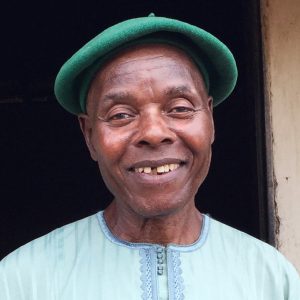Introduction
Renowned worldwide as an mbira maker and outstanding mbira player, Tute Chigamba has performed and taught in the US, Europe, Canada, and South Africa.
See him at work making mbiras.
Recordings Available From MBIRA
Listen to samples of Tute Chigamba’s many many mbira albums recorded between the 1980’s and 2019.
Videos
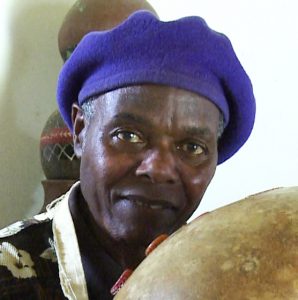
Biography
Early Musical Experiences
Tute Wincil Chigamba was born into a family of musicians, spirit mediums, and healers on 3 January 1939, in the rural area of Guruve, Zimbabwe. His totem is Soko Wafawanaka.
Chigamba’s father, a skilled drummer, played at weekly spirit possession events in the village of Kamuchanyu, where he served as an interpreter for one of the founding ancestors of the Nhova clan.
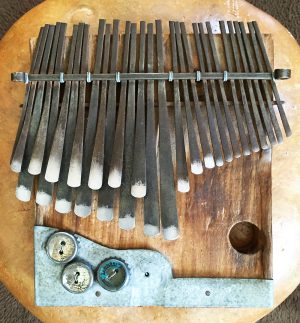
Marking the start of a rich musical life, Tute Chigamba (Wafawanaka) first learned to play a six-key Zambian karimba with a small gourd resonator, while living on the commercial farm where his father worked in the early 1940s. His teacher was Kachonda, a Zambian farm worker.
At the age of 7, Wafawanaka moved to his grandmother’s village, separating him from his karimba teacher and the single instrument they had shared. Now Chigamba learned to play the chipendani mouth bow, taught by his grandmother. While herding cattle, he played a mukubhe (reed aerophone) that he made, and the pennywhistle.
Chigamba also surreptitiously borrowed an acoustic guitar owned by one of his uncles, and taught himself to play. In the 1950s, Wafawanaka sang in the choir at St. Nicholas School. At St. Nicholas, he continued to play guitar, sneaking out into the trees during the lunch break with a friend whose father had bought him an instrument.
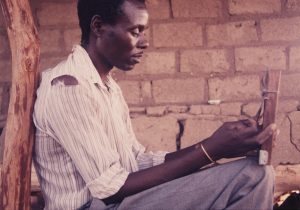
Wafawanaka was only able to attend school through 5th grade, due to the African majority’s lack of access to education during Zimbabwe’s colonial period. After marrying in the late 1950s, Chigamba worked on tobacco farms, including clearing land, and acquired extensive knowledge about trees during this period.
In 1962, Chigamba moved to Highfield township of Zimbabwe’s capital Harare, then known as Salisbury. His original plan had been to cross the Zambezi River and travel through Northern Rhodesia (now Zambia) into the Congo, where he hoped to learn the rhumba-influenced guitar music that was sweeping Southern Africa in the early 1960s. To prevent his departure, however, a cousin in Highfield quickly found him a job at a wholesale shop owned by a Greek immigrant, where Wafawanaka would continue to work until the late 1970’s.
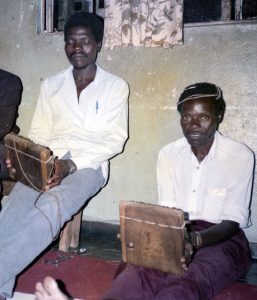
Learning to Play Mbira
While Chigamba heard mbira music performed in ceremonies during his childhood, it was not until 1965, while attending a bira ceremony in Highfield, that he became especially impassioned by mbira music. Soon, he began traveling to the Chihota rural area every weekend in order to attend ceremonies and listen to mbira music. He was first inspired to try playing the instrument himself when he saw a young boy performing in Chihota. However, his initial attempts to learn were unsuccessful. Finally, Wafawanaka purchased an instrument for himself in 1968. Mhembere, who sold him the mbira, wanted to teach Chigamba for 25 cents a song, but this was declined as too expensive.
Chigamba began teaching himself to play by ear, starting with Chipindura, followed by Nhema musasa and Kuzanga. By the end of the first week, he was playing 5 songs.
Wafawanaka says,
“It was relatively easy for me, as the music was loud in my mind and it was only a matter of listening, and looking for the keys on my mbira.”
Other musicians were both surprised and envious of Chigamba’s quick learning, and steady playing. Wafawanaka says that, in his family history, only one ancestor played mbira, but now he has revived mbira in the family. He has taught his brothers to play, and his children and grandchildren.
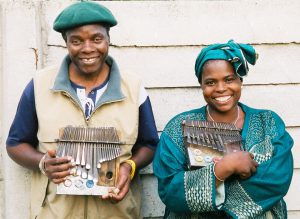
Playing Mbira
Chigamba was quickly very accomplished on the mbira, even playing solo in ceremonies with his wife adding hosho and vocals, or playing mbira together with his wife. He attributes his early style to the influence of Mubaiwa Bandambira’s 45 rpm vinyl records, and a close friendship with Bandambira’s brother-in-law Mukwani who played in Bandambira’s style.
Chigamba’s late wife, Laina Muchenje, was also a talented mbira player, hosho player, singer, and dancer. Then, their first child, Irene, mastered mbira, hosho, singing, drumming and dance at a young age. This resulted in the family group performing at ceremonies all over Zimbabwe. When she grew up, Irene Chigamba performed and taught all over the world.
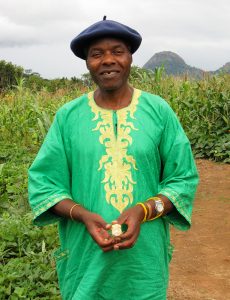
While Chigamba and his family originally played nyamaropa tuning, they later were introduced to mavembe, also called gandanga, tuning by one of Wafawanaka’s mbira partners: Thomas ‘Sekuru Gora’ Wadarwa. This became the favorite tuning of the family, and Chigamba says his preference for a 28-key mbira in this tuning came from copying Wadarwa’s instrument.
Wafawanaka is unusual in Zimbabwe, as he considers himself a composer of new songs for the mbira – he and his family include many of these in their repertoire, as well as the standard Shona mbira pieces. Most Shona mbira players believe that all mbira music comes from the ancestors, and that anything new comes from them, rather than the musician himself…and they consider Chigamba’s compositions to be variants of traditional pieces. Chigamba agrees that his compositions are derived from traditional pieces, so this disagreement is a matter of semantics. Chigamba’s “compositions” include Bembero, Ngozi yemuroora, Ndomutenda mambo, Pasi mupindu, and more, and they have been accepted by the ancestors to be played in ceremonies.
Asked about the most important thing with mbira music, Chigamba said,
“Mbira is not for joy or fun, it’s for the ancestors to stay close (to take care of us), it’s a prayer, it’s our religion which should be followed at all times.”
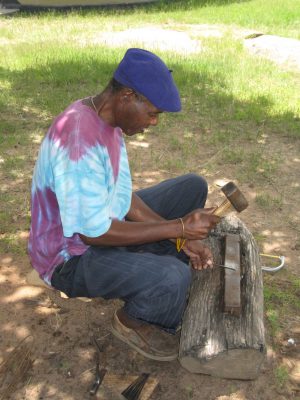
Mbira Making
In 1978, Wafawanaka finally left his job at the wholesale shop. He had become a master blacksmith, specializing in making spears, knives, axes, hoes and small clubs.
When Chigamba was hired to play mbira at a ceremony, and realized that one of his keys had been broken, he forged a replacement key. After the ceremony, he dismantled his mbira and reconstructed it. Success!
Embarking on mbira making, Wafawanaka looked for appropriate wood, and forged steel keys for the instruments. During the 1990’s, he used scrap rebar ties from construction sites to make all the keys and other metal parts of the instruments he constructed. See Chigamba at work making mbiras.
He made nyamaropa tuning mbiras, then mavembe, and later also karimba, matepe, and njari. He had Thomas ‘Sekuru Gora’ Wadarwa tune his first mavembe mbira.
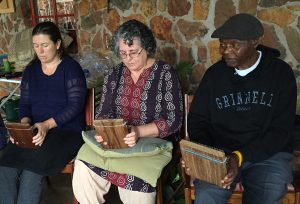
Chigamba’s mbiras are cold forged, as the softer steel used does not require heating. The tone is very sweet!
Mbira Teaching
Chigamba taught not only his brothers, but also his children and grandchildren to play mbira, and some of them have performed around the world, including two who now live in other countries.
Wafawanaka has also taught countless mbira students, both Zimbabwean and from countries around the world. He has taught at MBIRA’s workshops both in the US and Zimbabwe.
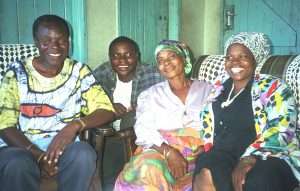
Family
In 1984, four years after Zimbabwe’s independence, Chigamba acquired land in a resettlement zone in the northeastern region of Mount Darwin, where he and his wife, Laina, would maintain a rural home for over two decades. Laina, who passed away in 2007, and Wafawanaka eventually remarried.
Sources
This biography is based on a 2003 interview by Denver Banda and 2015 short biography by Jennifer Kyker, edited and added to by Erica Azim. Extensive information about Tute Chigamba can be found at Jennifer Kyker’s website sekuru.org.
